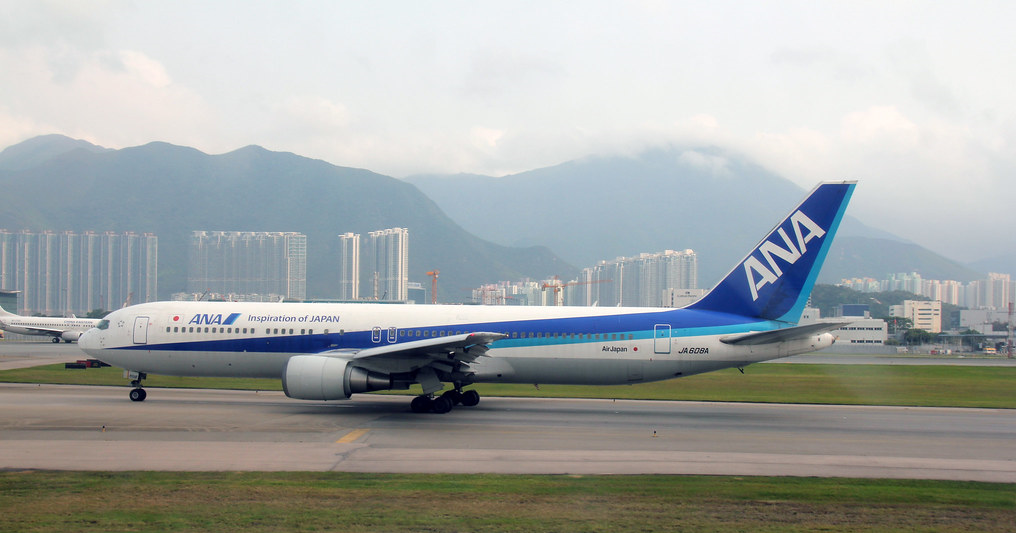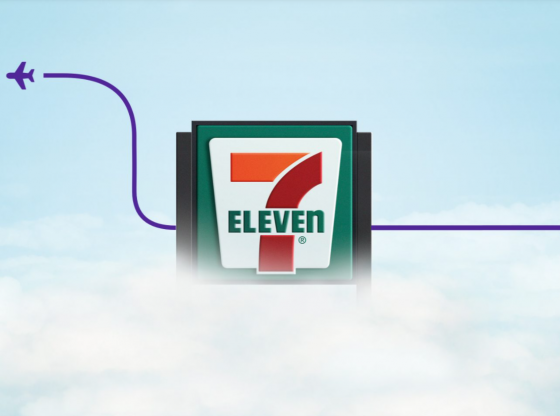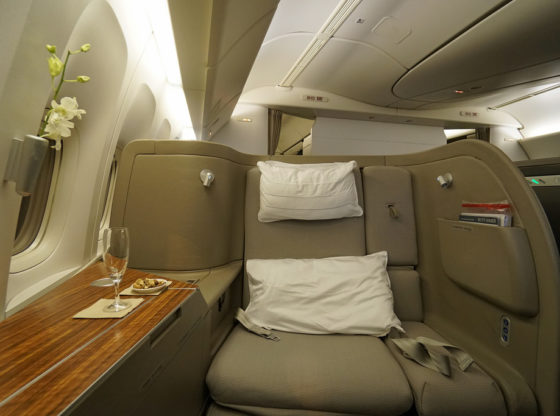
In anticipation of increased air-traffic in the lead-up to Tokyo 2020 Olympic Games next year, Haneda airport in Tokyo have been granting rights to operate additional flights. The new slots are being awarded to a number of different countries, including Australia.
The agreement between Japan and Australia will see 4 new daily flights introduced between the 2 countries. These are split evenly, with both Japanese and Australian carriers getting 2 flights each. We know that Japan have split their quota of 2 flights, with Japan Airlines (JAL) and All Nippon Airways (ANA) receiving 1 flight each.
The equation is not so simple on the Australian side, with Qantas wanting to operate both new flights, prompting Virgin Australia to mount a counter bid.
Haneda Airport
Tokyo has 2 airports, Haneda and Narita. Of the 2, Haneda is extremely sought after by loads of international airlines due to it’s proximity to Tokyo City. Haneda is just 18 km’s from the city and offers excellent onward connections to various domestic destinations within Japan.
On the other hand, Narita is approx 67 km’s from Tokyo down-town, and while it also offers domestic connections, it’s a far cry from what Haneda offers.
To give you some idea about the wide variation, a quick search on Google flights for a random date in November shows:
- ANA operates up to 25 non-stop daily services between Haneda – Osaka.
- JAL operates up to 19 non-stop daily services between Haneda – Osaka.
For the same date, both ANA and JAL only offer 2 non-stop services each, between Narita – Osaka.
Virgin Australia Proposal
Virgin have made a submission to International Air Services Commission (IASC)- Australia, under which it has expressed a strong desire to operate daily flights between Brisbane and Tokyo (Haneda). If approved, flights will commence on 29th March 2020 and will be operated by Virgin’s one of six A330-200, featuring 20 reverse-herringbone, business class seats and 255 seats in economy class, including 8 Economy X (total 275 seats).

Virgin Australia Economy X seats offer extra legroom
Virgin says that if granted, this will bring great benefit to flying public by:
- bringing competition and a new daily frequency to the route between Brisbane and Tokyo, which is currently a monopoly route served by Qantas Airways.
- adding 200,750 seats onto the Japan route, injecting up to 110,960 more seats with one additional daily frequency than the Qantas Group would with its proposal for utilisation of two daily frequencies, highlighting that Virgin Australia would use the capacity requested more efficiently and drive growth in the overall market.
- enabling a fourth airline group to enter the Japan route, rather than maintain the status quo of three airline groups.
- placing downward pressure on airfares and airfreight rates on the Japan route and increasing the availability of airfares in lower-priced booking classes.
- providing the best opportunity to maximise the dispersal of Japanese visitors between the eastern and western seaboards, given our partnership with ANA as the only airline offering flights between Perth and Tokyo.
- allowing Virgin Australia to offer new and enhanced product and service options on the route, including in-flight connectivity (internet access) and a more generous checked bag allowance than Qantas Airways.
For full details, check out this link on Interntional Air Services Commission website.
Qantas Proposal
Qantas currently operates a daily flight between Sydney – Haneda, alongside it’s daily services from both Melbourne and Brisbane – Narita. Under it’s own proposal seeking rights to operate both new flights, Qantas have promised to:
- Add a 2nd daily Sydney – Haneda service.
- Replace it’s existing Melbourne – Narita with a new Melbourne – Haneda service.
Some of the arguments put forth as to why it should exclusively be awarded rights to operate both flights are:
- Qantas’ plans include adding a new daily Sydney-Haneda service, the largest Australia-Tokyo route. An additional daily service to Haneda, at an alternative timing, would provide more choice and greater convenience for these travellers heading directly to downtown Tokyo.
- A new Qantas Melbourne-Haneda service provides a more geographically diverse and competitive market structure between Australia and Haneda, reaching a broad catchment area across Australia with greater connectivity for regional Victoria, Tasmania and South Australia.
- Qantas’ plans for daytime Haneda services will provide direct access between Melbourne and Haneda for the first time – a city pair that is not currently served non-stop by any other carrier.
- Qantas is best suited to serve Haneda and the airport’s skew towards premium passengers, with a reputation for quality product, service and operational reliability. These services will be operated with new or recently refurbished aircraft, at timings convenient for business travellers.
- Qantas’ plans to utilise the daytime Haneda frequencies do not deny competition from other Australian carriers. There are no constraints at Narita or any other point (with the exception of Haneda) under the air services arrangements between Australia and Japan, where capacity is unrestricted.
You can read these in detail over here.
Virgin & ANA
Virgin Australia have cited its newly minted partnership with Japanese carrier ANA, as a strong justification for awarding it one of the two allocations. ANA is Japan’s largest airline, operates 1,300 daily return flights and connects to 38 domestic destinations from it’s Haneda hub.

ANA ready for take-off
As per the submission made to IASC, the 2 airlines will code-share on flights, both between and within Australia and Japan, giving Virgin Australia, access to ANA’s extensive domestic network. Similarly, ANA passengers travelling to Brisbane will be able to connect for their onward journey within Australia and the South Pacific on Virgin Australia’s own network.
Virgin and ANA are also understood to have drawn-out a reciprocal loyalty benefits programs for members of Virgin’s Velocity and ANA’s Mileage Club program. Although more details on this is expected to be announced in March 2020, prior to commencement of service, this generally means that Velocity members will be able to earn and redeem points and status credits on all ANA flights between the 2 countries, as well as on all of ANA’s domestic flights. Ditto for the Mileage Club members.
My Thoughts and why I think Virgin Australia deserves a shot
On the face of it, this appears to be an open and shut case, Qantas is a bigger, older and highly profitable airline. It has a massive network, numerous partnerships with other carriers both bilaterally and by the virtue of being a member of Oneworld alliance, and has demonstrated that it can successfully and profitably operate and sustain flights between Australia and Japan.
In JAL, Qantas has a fellow oneworld partner and the 2 have worked together for a number of years. Qantas’ loyalty program also happens to be the 5th largest in Australia with over 12 million members.
On the other hand is Virgin Australia, a relatively new kid on the block and a brand which only came into existence in 2011. It has virtually no long-haul network of it’s own, besides flights to LA and has never turned a profit in it’s short history. The new CEO had recently announced job cuts, and ‘rightsizing’ the airline to curb mounting losses.
Although it’s Velocity Frequent Flyer Program has quickly grown and now boasts over 9 million members, the program isn’t quite as valuable as Qantas’, partly due to lack of it’s own long-haul network and the fact that Virgin isn’t part of any of the 3 major airline alliances.
Despite all of the above, in my opinion, Virgin deserves one of the 2 slots for the following reasons:
- The Australia – Japan market is currently dominated by Qantas and JAL, who together command over 90% market share. A new player entering the market will provide much needed competition and drive the air-fares lower. We have seen this happen earlier when Virgin commenced direct flights to Hong Kong, which sent prices on that route cratering by 30-50%.
- Unlike Qantas, Virgin are only asking for 1 slot. If this is approved, and provided Qantas utilises the other slot to commence Melbourne – Haneda service, this will see all the 3 major cities in Australia (Sydney, Melbourne and Brisbane) connected to Haneda.
- If Qantas were to be allocated both slots, this would see Qantas solely operate all 3 services between Australia and Haneda, and Virgin none. That is hardly an ideal scenario to stimulate the market and drive competition.
- Outbound travel from Australia to Japan is booming. In 2018, more than 500,000 Australians visited Japan, which was a 12% rise on the previous year. Majority of tourism to Japan is dominated by high value, premium passengers. Flights to Haneda are considered high yielding, which should help Virgin Australia operate this route profitably.
- Lastly, Virgin’s share-holder and close partner Delta is in the process of moving it’s entire Tokyo operations to Haneda. This may allow further collaboration between the 2 carriers and open up new opportunities for Virgin Australia.
IASC- Australia are expected to make the final decision by 31st October. Watch this space.
What do you think of Virgin’s potential foray into Japan? Leave a comment below.





















